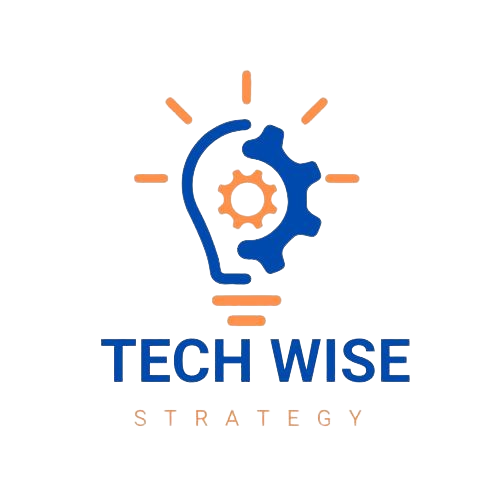In the ever-evolving landscape of business, understanding the fundamentals of technology strategy is crucial. Technology Strategy 101 serves as the cornerstone for businesses aiming to leverage technology effectively to achieve their objectives. But what exactly is Technology Strategy?
What is Technology Strategy 101?
Technology Strategy 101 encompasses the systematic approach businesses take to leverage technology resources to achieve their long-term goals. It involves aligning technology initiatives with business objectives, optimizing technology investments, and anticipating future technology trends to maintain a competitive edge in the market.
What Exactly is a Technology Strategy?
At its core, a Technology Strategy outlines how technology will be used as a tool to support the overall business strategy. It involves making deliberate decisions about which technologies to invest in, how to implement them, and how to manage and optimize their use over time.
Also Read: Story of spartan capital securities llc broker jordan meadow
Six Core Areas of Business Technology:
Infrastructure and Operations: This area focuses on the foundational elements of technology, including hardware, software, networks, and data centers, ensuring they are robust, secure, and scalable to support business operations.
Information Security: With the rising threat of cyberattacks, businesses must prioritize securing their data and systems. Information security strategies involve implementing measures to protect against breaches, ensuring compliance with regulations, and fostering a culture of cybersecurity awareness.
Enterprise Applications: These encompass the software solutions that enable various business functions such as customer relationship management (CRM), enterprise resource planning (ERP), and supply chain management (SCM), streamlining processes and enhancing efficiency.
Data Management and Analytics: In today’s data-driven world, organizations must effectively collect, manage, and analyze data to derive valuable insights that drive decision-making and innovation.
Digital Transformation: Embracing digital transformation involves leveraging emerging technologies such as artificial intelligence (AI), machine learning (ML), Internet of Things (IoT), and cloud computing to innovate processes, products, and services.
Technology Governance and Compliance: Establishing governance frameworks ensures that technology investments align with business objectives, adhere to regulatory requirements, and mitigate risks effectively.
Why You Need a Technology Strategy Framework?
Implementing a Technology Strategy framework provides businesses with a roadmap for success.
It enables organizations to:
- Align Technology with Business Goals: By aligning technology initiatives with business objectives, organizations ensure that technology investments contribute directly to achieving strategic priorities.
- Optimize Resource Allocation: A Technology Strategy helps businesses prioritize technology investments, allocating resources effectively to initiatives that deliver the greatest return on investment.
- Mitigate Risks and Ensure Compliance: By proactively addressing security risks and compliance requirements, organizations safeguard their reputation and minimize potential disruptions to operations.
- Drive Innovation and Competitive Advantage: A well-defined Technology Strategy fosters innovation by leveraging emerging technologies to differentiate products and services, stay ahead of competitors, and meet evolving customer demands.
Benefits For Business and IT Executives:
For business and IT executives, a Technology Strategy framework provides a structured approach to:
- Strategic Planning: Align technology initiatives with business goals and establish a roadmap for achieving strategic objectives.
- Resource Management: Optimize technology investments and allocate resources effectively to drive business growth and innovation.
- Risk Management: Identify and mitigate technology risks to safeguard business operations and protect against potential threats.
Benefits For Non-IT Professionals:
Even for non-IT professionals, understanding and embracing Technology Strategy offers numerous benefits:
- Enhanced Collaboration: Improved alignment between technology and business goals fosters collaboration between departments, enabling cross-functional teams to work together more effectively.
- Increased Efficiency: Streamlined processes and enhanced technology capabilities result in increased efficiency and productivity across the organization.
- Informed Decision-Making: A better understanding of technology strategy enables non-IT professionals to make informed decisions about technology investments and initiatives that impact their areas of responsibility.
- Career Development: In today’s digital economy, proficiency in technology strategy is a valuable skillset that can enhance career prospects and open up opportunities for growth and advancement.
FAQs:
What role does Technology Strategy play in digital transformation?
Technology Strategy serves as the foundation for digital transformation initiatives, guiding organizations in leveraging emerging technologies to innovate processes, products, and services to meet evolving customer demands and stay ahead of competitors.
How can small businesses benefit from implementing a Technology Strategy?
Small businesses can benefit from a Technology Strategy by leveraging technology to enhance operational efficiency, improve customer experiences, and compete more effectively in the market, even with limited resources.
What are the key challenges in implementing a Technology Strategy?
Key challenges in implementing a Technology Strategy include managing complexity, balancing short-term needs with long-term objectives, ensuring alignment between technology and business goals, and addressing talent shortages and skill gaps.
How often should a Technology Strategy be reviewed and updated?
A Technology Strategy should be reviewed and updated regularly, ideally as part of the overall strategic planning process, to ensure alignment with evolving business priorities, technological advancements, and changes in the competitive landscape.
Conclusion:
Technology Strategy 101 serves as a guiding framework for businesses seeking to harness the power of technology to drive innovation, growth, and competitive advantage. By aligning technology initiatives with business objectives, optimizing resource allocation, and fostering a culture of innovation and collaboration, organizations can position themselves for success in today’s digital economy.

